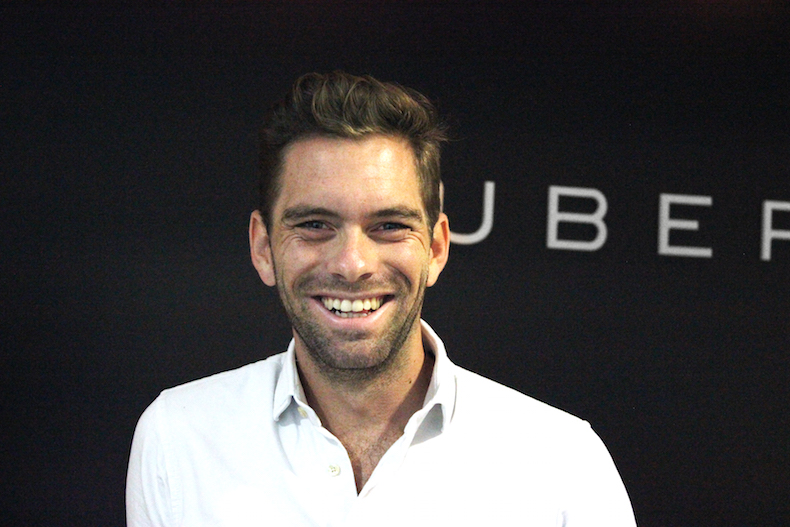
Uber is ensuring that it does not slow down its growth pace in the region with the launch of new markets and products. Christopher Free, Uber’s GM – UAE and Qatar, speaks to AM’s Sana Mahmud on what’s next on the company’s agenda
Uber had created quite the buzz last year when it had earmarked an investment of USD 250 million towards growing its business in the Middle East and North Africa (MENA) region. MENA for Uber includes markets from Morocco and Egypt to Turkey, across to Pakistan. Uber’s most recent launch, Lahore, combined with its experience in markets such as Qatar, Saudi Arabia and Egypt has encouraged it to grow its footprint in MENA. Consequently, 2016 will see Uber employ a two-fold growth strategy.
The first part is to grow the business further in its existing markets. “Some of our markets are scaling quickly and will require resources to sustain that growth. We also need the right teams so we are investing in hiring people across the different cities we are in, and in building local presence in the new cities where we intend to launch,” informs Christopher Free, General Manager, Uber UAE and Qatar.
The second pillar of the strategy is debuting into newer markets and a big portion of that is expansion in Africa. While the company has presence in South Africa, it is eyeing expansion in countries in Eastern Africa. Much like most tech companies, Uber is also faced with challenges on how ready some of these markets are. “Areas like mapping and payments need attention but our experiences in some of the markets bring learning on how to work with the likes of mobile wallets, and we will apply these in Africa,” states Mr Free.
Growth for a company like Uber generally means growing drivers and riders. Much of its marketing and promotional efforts are trained in that direction. However, Mr Free reminds that MENA is not just any region. “Given the pace at which this region is growing, we are at the tip of the iceberg. We can get enough scale here, which will in turn lower prices, and open the product up to newer audiences. Traditionally it is the tech-savvy, early adopters but as we get the prices down, we can serve different kinds of demographics,” he explains.
MENA Matters
For Uber, MENA is exciting at different levels. Aside just the growth opportunity that it sees despite all talks of a tough economy, in MENA, Uber also has the chance to engage regulatory bodies to form policies that are friendlier to new-age business models. Unlike the Western Europe, where companies are still aligning with policies written decades ago, MENA is nearly a blank canvas. “There are many concerns such as congestion, unemployment or pollution, where a company like Uber can help. And the governments here have the willingness to listen and encourage the solution we provide,” Mr Free explains.
This is not to say that regulatory bodies don’t pose challenges of their own. “The risk in a region like this, where governments talk to each other very often, is the interconnected network. Whatever happens in one market is likely to follow suit in another. We ensure that we are safe, efficient and working together with regulators to genuinely drive solutions in all the cities we are in. My job is perhaps 60 percent working with regulatory bodies and 40 percent on operations. This may be the other way round in some of the other markets,” says Mr Free.
Not that Mr Free is complaining. Uber is at a stage in the region, where because it has diversified its businesses, it is not feeling any actual impact of an economic downturn. While this asserts the growth MENA promises, it also highlights the product strategy that Uber has very carefully followed.
Uber had launched with it low cost product UberX, and progressively added the likes of UberChopper and UberVIP. “We have seen the way product evolution has gone through our largest markets. Newer services like UberPool, which uses technology to facilitate carpool, UberRush, an on-demand delivery is also on the agenda. “UberPool has certain requisites for instance enough number of people travelling in the same direction. Dubai is interesting because it may not have the volume but the city sees people going in the same directions. Other requirements, including policy, being met, we would bring these products in the market too,” informs Mr Free.
Scaling Profitably
The year would also see Uber don a marketer hat using mainline media, which is new for the company, considering most of its marketing is on digital platforms. The likes of ‘Give a ride, Get a ride’ and referrals largely form Uber’s plot of acquiring new riders. “Everything for us has been digital in the past, with a promo code attached to it, so we can monitor it and know the return on investment. Advertising on traditional media is new territory because we are not used to something that we cannot measure. But we are thinking about experimenting from a brand recognition viewpoint,” divulges Mr Free.
One reason why Uber is exploring new avenues to grow its brand is because it has set eyes on not just scaling but doing so profitably. At present, much like it is for Uber globally, the business in MENA has some operations that are more profitable than the others. “We are able to spend monies in growing the newer, lesser profitable markets without pulling money from external sources. That being said, growing our revenue is absolutely something that we are working towards,” says Mr Free.
Uber sure has marked a surge in its activities in 2016 but how much can it make the operation in MENA profitable would make for an interesting watch.

